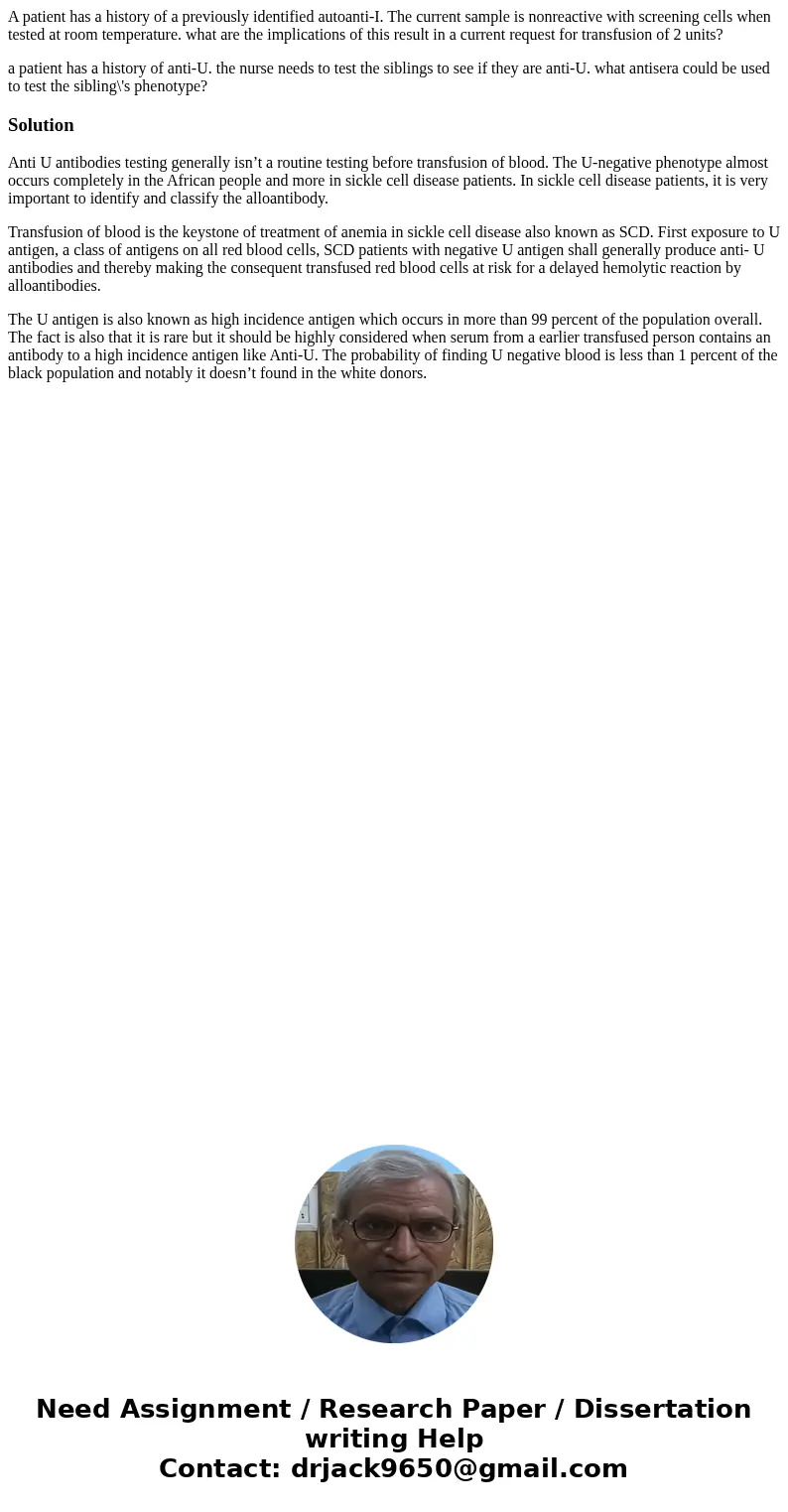A patient has a history of a previously identified autoantiI
A patient has a history of a previously identified autoanti-I. The current sample is nonreactive with screening cells when tested at room temperature. what are the implications of this result in a current request for transfusion of 2 units?
a patient has a history of anti-U. the nurse needs to test the siblings to see if they are anti-U. what antisera could be used to test the sibling\'s phenotype?
Solution
Anti U antibodies testing generally isn’t a routine testing before transfusion of blood. The U-negative phenotype almost occurs completely in the African people and more in sickle cell disease patients. In sickle cell disease patients, it is very important to identify and classify the alloantibody.
Transfusion of blood is the keystone of treatment of anemia in sickle cell disease also known as SCD. First exposure to U antigen, a class of antigens on all red blood cells, SCD patients with negative U antigen shall generally produce anti- U antibodies and thereby making the consequent transfused red blood cells at risk for a delayed hemolytic reaction by alloantibodies.
The U antigen is also known as high incidence antigen which occurs in more than 99 percent of the population overall. The fact is also that it is rare but it should be highly considered when serum from a earlier transfused person contains an antibody to a high incidence antigen like Anti-U. The probability of finding U negative blood is less than 1 percent of the black population and notably it doesn’t found in the white donors.

 Homework Sourse
Homework Sourse